first survey and in-depth interview
In Thailand’s creative industries, people have burnout surveys and in-depth interviews.




The most mental problem I found is burnout, and the workshop or something they want to do is Discussions and Art therapy.
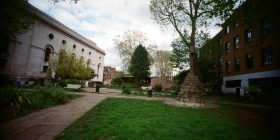
In Thailand’s creative industries, people have burnout surveys and in-depth interviews.




The most mental problem I found is burnout, and the workshop or something they want to do is Discussions and Art therapy.
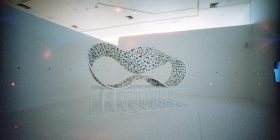
Many Idaes from the book Creative block : get unstuck
Creative unBlock
Project No. 01
Draw something on a piece of paper. Stare at it.
Trash it. Draw it again on arother piece of paper.
Dane at it. Trash it. Repeat. Orce you feel you’re done, ungrumple all the preces of paper and line them up in order
ARIAN BEHZADI

Creative unBlock
Project No. 08
Visit a thrift store and buy an old magazine and an old book. Take them home, chop them up, and make five new collages.
ANTHONY ZINONOS

Creative unBlock
Project No. 15
Creativity thrives when we are given restric-tions. Ask someone to write a story about anything and they’ll wallow in indecision.
Ask them to write one page about their first pet in less than three minutes, and the story will start to flow. Create an original image in less than thirty minutes based on one of the metaphors below, one from Shakespeare’s As You Like It, and one attributed to Groucho Marx. Don’t worry about the outcome, just get it done.

Creative unBlock
Project No. 34
Choose one thing you love to draw or paint (and feel comfortable drawing or painting) already: an animal, object, a person, what-ever. For thirty days, draw or paint that thing thirty different ways, a different way every day. You can use different mediums, expres-sions, positions, colors, whatever. Each day, push yourself to do something much different than the day before, but keep the subject the same. See how keeping one element constant (in this case, the “thing” you love to draw or paint) can allow you to break out creatively in other ways.
LISA CONGDON

Creative unBlock
Project No. 39
Okay, this challenge is one I’ve given myself many times, and every time it has inspired something new: Do a painting that is nothing like anything you would usually do. Make marks that feel awkward, use colors you would never reach for, use materials you don’t necessarily know what to do with, dare to go against what you know. If you are an artist who works a lot, you’ve probably developed a certain style that is unmistakably yours. Your creative muscle has become strong, maybe overbearing. It’s time to stretch! Try to do something that no one would recognize as yours, that people would look at and say, “Really? You did this?” (And they need not mean it as a compliment!)
This exercise always helps me break out when I’m feeling bored by myself. It has radically changed my work many times over the years, and I’m counting on it to continue doing so.
The rolling stone gathers no moss.
FIONA ACKERMAN

It is when I find myself playing more than trying that I find my way out of a block. —ARIS MOORE

Jc-What advice would you give to your younger self about getting out of a creative block?

AZ-I’ve learned to reassure myself that all I have to do is sit back and patiently wait, or step away from all things art related for a while. It is so easy to get caught up with what you’re working on. By stepping away, it gives you a chance to put things into perspective, and realize that it’s not actually the end of the world. So, I would tell the younger me, “Don’t worry or stress about it; take some time out and do or think about something totally different. The block will always pass, leaving behind some magical inspiration.”
ANTHONY ZINONOS
REF
Krysa, D. (2014). Creative block : get unstuck : discover new ideas : advice and projects from 50 successfu artists. San Francisco, California: Chronicle Books Llc.
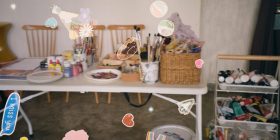
Art therapy is a mental health profession that enriches the lives of individuals, families, and communities through active art-making, creative process, applied psychological theory, and human experience within a psychotherapeutic relationship.
The American Art Therapy Association (AATA)
Art therapy is an established form of psychotherapy, delivered by trained art therapists (also known as art psychotherapists).
Art therapy uses art as the primary mode of expression, alongside talking with an art therapist. It aims to reduce distress and improve social, emotional, or mental health by promoting insight, self-compassion and a sense of agency and self-worth.
During art therapy, you are supported by an art therapist to use art to express and articulate often complex thoughts and feelings through art making. This may be following difficult or traumatic experiences which may be hard to talk about.
Who is art therapy suitable for?
Art therapy can help people of all ages and at all stages of life, including those whose life has been affected by difficult personal or cultural experiences, illness and/or disability. You do not need to be skilled in art to benefit from art therapy.
Art therapy is suitable for anyone who is willing to use art to express their feelings. It can be especially helpful for those looking for a creative way to move forward when they feel stuck in life. It can help people reflect on long standing dynamics, issues from the past or simply find a different way to understand yourself and others.
The British Association of Art Therapists (‘BAAT’)
https://baat.org/art-therapy/what-is-art-therapy/

Definition of Self-Compassion:
Self-kindness
Common humanity
Mindfulness
Video
How Photography Saved My Life | Bryce Evans | TEDxSFU
Taking a photo each day and posting it online has complex benefits say researchers who say it supports improved wellbeing.
They found that taking a daily photo improved wellbeing through:
Taking a moment to be mindful, and looking for something different or unusual in the day were seen as positive well-being benefits of the practice.
https://www.sciencedaily.com/releases/2018/04/180430131759.htm
The Connection Between Art, Healing, and Public Health: A Review of Current Literature
https://www.ncbi.nlm.nih.gov/pmc/articles/PMC2804629/
Creative burnout: when the creativity tap runs dry
Overcoming Burnout through Arts
Mental Health for Creatives
https://withtherapy.com/mental-health-resources/mental-health-for-creatives/
Burnout is a syndrome conceptualized as resulting from chronic workplace stress that has not been successfully managed. It is characterized by three dimensions:
Burn-out refers specifically to phenomena in the occupational context and should not be applied to describe experiences in other areas of life.
Burnout phenomenon: neurophysiological factors, clinical features, and aspects of management
https://www.ncbi.nlm.nih.gov/pmc/articles/PMC9478693/#bibr12-03000605221106428
How to recover from burnout and love your life again
https://www.betterup.com/blog/how-to-recover-from-burnout
Burnout and Your Inner Critic
3 Reasons Your Inner Critic Doesn’t Want to Leave Your Mind
https://www.bigselfschool.com/post/3-reasons-your-inner-critic-persists
Living With Your Inner Critic
8 Helpful Worksheets and Activities
Anna Katharina Schaffner | PositivePsychology
https://www.the-exhaustion-coach.com/post/living-with-your-inner-critic
Creative burnout. Time to take a break?
https://www.moo.com/blog/uk/business-tips/creative-burnout
A Novel Mindful-Compassion Art-Based Therapy for Reducing Burnout and Promoting Resilience Among Healthcare Workers: Findings From a Waitlist Randomized Control Trial
https://www.frontiersin.org/articles/10.3389/fpsyg.2021.744443/full
Self-Compassion is Productive
https://www.arts.ac.uk/students/student-careers/stories/self-compassion-is-productive
Self-Compassion Explains Less Burnout Among Healthcare Professionals
https://link.springer.com/article/10.1007/s12671-020-01469-5
****Burnout and How Self-Care and Self-Compassion Can Help
https://encompass.eku.edu/cgi/viewcontent.cgi?article=1023&context=psych_doctorals

*Maslach Burnout Inventory – General Survey: Factorial validity and invariance among Romanian healthcare professionals
https://www.sciencedirect.com/science/article/pii/S2213058614000436
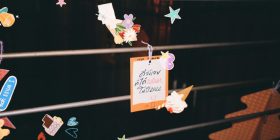
an essential quality of museum-based art therapy that supported healing and therapeutic change. Implications of the study are presented as three interrelated areas that emerged as important considerations for future research and partnerships between art therapists and museums. These topics include poetic verse as art-based inquiry; empathetic imagination in community art therapy; and an organizational structure for museum-based art therapy
https://digitalcommons.lesley.edu/cgi/viewcontent.cgi?article=1036&context=expressive_dissertations
Art therapy isn’t for everyone. While high levels of creativity or artistic ability aren’t necessary for art therapy to be successful,10 many adults who believe they are not creative or artistic might be resistant or skeptical of the process.
In addition, art therapy has not been found effective for all types of mental health conditions. For example, one meta-analysis found that art therapy is not effective in reducing positive or negative symptoms of schizophrenia.
https://www.verywellmind.com/what-is-art-therapy-2795755
The most important thing is that you should try art therapy only if you want it. Expressing yourself through art can be self-revealing and sometimes equally painful as talking. So, if you still don’t feel ready to try it, that is okay.
https://www.weforum.org/agenda/2020/02/mental-health-investment-thailand/
The study notes that while Thailand has made important progress in addressing child and adolescent mental health especially in national policy and legislation as well as specific response in the health sector, there are still crucial gaps in addressing adolescent mental health such as inadequate budget, limited coordination among different service sectors as well as insufficient psychiatrists and skilled workforce across all sectors.
About eight in 10 Thai consumers have experienced mental health issues in the past six months, with stress (46%), insomnia (32%) and anxiety (28%)

The Change I Want to See is something about Mental health that I have experienced before. For all depression and anxiety, I use art to cope with myself and talk with people I trust.
More than 3 million Thais struggle with mental illness. (World Economic Forum, n.d.). While Thailand has made significant progress in addressing child and adolescent mental health, particularly in national policy and legislation as well as targeted responses in the health sector, the study notes that there are still significant gaps in addressing adolescent mental health, including an inadequate budget, limited coordination among different service sectors, a shortage of psychiatrists, and an underqualified workforce across all industries. (www.unicef.org, n.d.)
I interviewed a few people, and one is an art therapist from Thailand. She said she used to do an online Open Heart club, free of charge, accessible to the general public. If I want to do an art club or community, I need a plan and funds. There is a lot of it that must use hidden costs. According to research, through various creative pathways that specifically enlighten meaning and purpose and heighten positive feelings and involvement, art therapy aids individuals in achieving greater well-being. Wilkinson and Chilton (2013)
Wilkinson and Chilton (2013) also draw attention to the unique advantages of the art therapy process to produce mastery and flow, to improve mood, and to inspire, create, and illuminate meaning considering the paradigm shift towards positive psychology. Because vibrant societies depend on creativity
Another group of people that I interviewed created an event called ‘Feel (in) Space’. It’s a painting picnic workshop with live music in a park in Thailand. They created creative and relaxed vibes. In the art club group, they have been trained to ask questions about ‘What’s going on lately?’. All the questions, they supervise by the art therapist and counsellor. This event keeps the vibe to be positive and uses positive psychology to help.
Creating a safe space is something that Thai people need. Thailand lack of a space where we can talk and create art. The Change I Want to See is Destigmatize Mental Health/ Well-being in Thailand. I want to create More Open Art Club/Communities/Safe Spaces that everyone can join to do art and talk in Thailand. Not just people with mental health issues but everyone feels free to join without any conditions. I am returning to Thailand this July to work with this space, and it will likely be the prototype and intervention for my final project. I must contact more art therapists and psychologists to help with the knowledge and details. I need to interview more people about the space I want to make, and it can be just an exhibition in July where people create their art pieces, do whatever they want and talk in a group.
It sounds like a significant change and a big one. I will start with a small step, and this project can change my life and maybe someone’s life too.

ref.
Wilkinson, R.A. and Chilton, G. (2013). Positive Art Therapy: Linking Positive Psychology to Art Therapy Theory, Practice, and Research. Art Therapy, 30(1), pp.4–11. doi:https://doi.org/10.1080/07421656.2013.757513.
World Economic Forum. (n.d.). What Thailand can teach us about mental health. [online] Available at: https://www.weforum.org/agenda/2020/02/mental-health-investment-thailand/.
www.unicef.org. (n.d.). Alarming poor mental health trend among children and adolescents in Thailand requires urgent investment in services. [online] Available at: https://www.unicef.org/thailand/press-releases/alarming-poor-mental-health-trend-among-children-and-adolescents-thailand-requires.
This week we focus on what workspace in Education will look like in the future.
Our group researched and imagined what it would be.
Learning space will look different from nowadays because of technology and the critical thinking of a human. We come up with the idea of gender-neutral humans, the structure and function of the space.
They can be 3D or 4D. We will reduce gender bias and ethnographic prejudice using technology such as Cyborgs and Virtual Space.
It can be learner-centred spaces that embody the principles of student-led learning. There’s no one-size-fits-all design; in addition to student ages, available resources, and building constraints, designs must consider variables ranging from the local climate to cultural conditions.
The roles of Students, Teachers, Researchers and Staff are only limited by time and activity. So, one person can be in more than one role. They can be a student in the morning and a teacher in the afternoon.
I come up with the idea of the Type of creative spaces from the research.
the focused creative work.
Solitary Space
allows thinking and meditation, which is characterised by a silent atmosphere
Team Space
invites people to communicate with each other, which is characterised by noise, playfulness and team interactions
Tinker Space
allows people to experiment and build stuff, e.g. in the university’s workshops
Presentation Space
where people can actively present and show their work or passively consume input (such as lectures)
Transition Spaces
like hallways, which are used for informal exchange and chats and to withdraw from
Thoring, K., Desmet, P. and Badke-Schaub, P. (2018) “Creative environments for design education and practice: A typology of Creative Spaces,” Design Studies, 56, pp. 54–83. Available at: https://doi.org/10.1016/j.destud.2018.02.001.
There’re four parts of the work that we will do.
– Illustrate future education workplace.
– The life routine in the future.
– Artefacts of the future.
– The persona of people in the future.

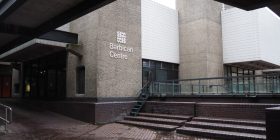
This week, we focus on mapping a workplace that we are interested. We choose Barbican Centre London. This unique venue presents diverse art, music, theatre, dance, film, and creative learning events. Our group think this place is a big self-learning place and related to our education topic.



I interview Chalipa Dulyakorn (Namo), founder of Inskru Page – a space for teaching and sharing. The Social Enterprise in Education. There are 3 questions that I ask her. (For more information about Inskru, click!)


Creative Day that Inskru has…
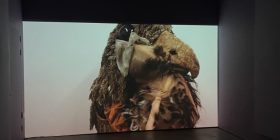
I want to reflect on many things that have happened in my life.
The project, the reading. And the lectures. There’s uncertainty and confusion.
I have to meet new people from MACCC, and it’s hard for me.
I don’t like making new connections or friends. Friendship can’t develop in one week. I need more time, and I know I have five weeks to go.
Group dynamics are essential. You must deal with new people. People interact with one another in a small groups. The stages of Group Development this week are forming and storming. Forming is that we all have agreements, Directions, and purpose. Storming is when we have conflicts and struggles (Tuckman, 1965).
Tuckman, B.W. (1965) “Developmental sequence in small groups.,” Psychological Bulletin, 63(6), pp. 384–399. Available at: https://doi.org/10.1037/h0022100.
On Wednesday, I went to the exhibition name ‘Nocturne’ by Ingela Ihrman at Gasworks gallery. There’re sculptures and videos about Oilbird. The main exhibition is Oilbird with Nestling (2021). The artist uses a camera to record in conditions of self-isolation during the pandemic. I feel like it’s about empathy and a sense of motherhood. The bird mother takes care of her baby and feeds her baby with food. She tries to find food from outside to keep her baby alive and safe. I love how the video tells a story by using subjects that can find in the normal life of humans and use them in the context of the animal’s life. It’s can reflect tenderness.
The space of this gallery makes me surprised because the space is small, but the artist can create the experience for this exhibition to fit the size of this space. Starting with a video about the digestive tract of a giant snake, then sculptures of the snake and bird. Ending with the main video about the oilbird.



On Friday, I work with my project group (The Apple Group). It’s not the first time that we met because we met on Wednesday at Gasworks and got to know each other background. That’s helped us a lot; we know what we going to talk bout in the meeting. We discussed future work. There are many topics that we can go with, such as Environmental/Sustainable, Gender/Sex Concerns, Well-being/Mental Health, and Technology Installation.
What is the office going to look like in the future?
What do we work for?
Do we work for money or happiness?
We all have limited resources, so what will we do with that problem?
Can it be Non-profit space?
Can it be flexible time to work?
There are many questions that we talked about, and we need to decide soon.
We want to design a space or something that can interactive with people too.
This week made me feel lost and anxious, but I tried my best to deal with and hold myself together. Be in the present and stop worrying about the future that does not happen. These things teach me how to live in the real world and that anything can happen at anytime. This is just the beginning. I can do it by myself and with help from my tutors and my friends.